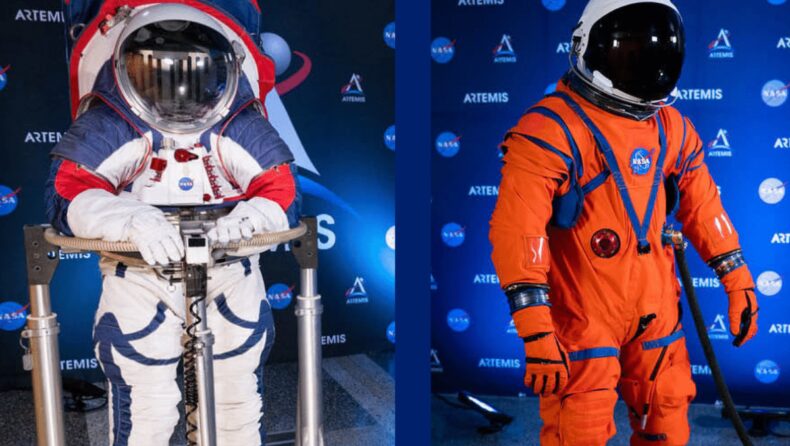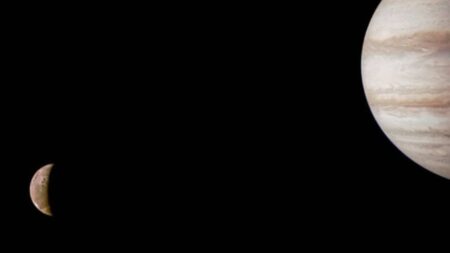On Wednesday, NASA revealed its first archetype contemporary spacesuit, innovatively structured and equipped for astronauts slated to return to the moon in the upcoming years. These sleeker spacesuits designed by Axiom Space will replace the voluminous and cumbersome moon suits used by Neil Armstrong and other Apollo astronauts. The suit prototype is known as the Axiom Extravehicular Mobility Unit and is greyish black in colour with orange and blue elements and a prominent Axiom logo. The real costume, however, will be white for thermal concerns. The new spacesuit is anticipated to be worn for the forthcoming Artemis mission III to explore the Moon.
Significant Design Features
NASA has disclosed the latest generation of spacesuits in aegis with Axiom Space for future moon missions. The innovative design includes specialised features to assist astronauts conducting scientific research on the surface of the moon. The new Axiom spacesuits are predicated on the Exploration Extravehicular Mobility Unit (AxEMU) design developed by NASA.
They are designed to offer greater adaptability, enhanced protection against the hazardous conditions, and advanced machinery to meet exploration requirements and extend research prospects. The new helmet provides enhanced vision, while the boots are developed specifically for moonwalking, with sufficient thermal insulation. As a spacesuit worn on the Moon must be white to reflect heat and protect astronauts from extraordinarily high temperatures, a cover layer is presently being employed to disguise the suit’s patented design for show purposes only.
Reasons for a Artemis – NASA Spacesuit
In 2019, NASA intended to dispatch an all-female crew to do a spacewalk from the International Space Station. But only days before Anne McClain and Christina Koch were to go on the walk, NASA realised they did not have two spacesuits in the necessary size for both women, and Nick Hague had to substitute McClain. NASA currently thinks that the revised design will solve these issues and is reportedly more suitable for female space travellers. NASA expects the improved suit to be ready for the Artemis III lunar mission in 2025. Since 1981, the current spacesuits used by American space travellers have not been completely changed.
Technicalities
Texas-based Axiom Space has shown the first model, six months after receiving a $228 million (£190 million) contract to create the suits. The new suit design also took the help of Esther Marquis from Apple TV series for better designing. AxEMU spacesuit, in contrast to earlier suits, has joints sewn in to provide astronauts additional flexibility.
The helmet has built-in LEDs as well. These characteristics are essential since the astronauts will have to investigate the topography of the Moon’s south polar area, recover samples, and gather further data. To guarantee precise measurements, the suits will be produced utilising cutting-edge manufacturing techniques including 3-D printing and laser cutting. The prototype is a component of NASA’s $1 billion effort to develop two spacesuits suitable for flight in time for the Moon mission.
Official Statement
The Artemis III spacesuit from Axiom Space, according to president and CEO Mike Suffredini, will be prepared to handle the difficult obstacles of the lunar south pole and advance their knowledge of the moon to make a sustained presence there possible. Before Artemis III launches in 2025, the spacesuits will go through more testing at NASA’s Johnson Space Center’s Neutral Buoyancy Lab throughout the following year.
Future Initiatives
The Axiom Space will tender for future Artemis mission services under the Exploration Extravehicular Activity Services (xEVAS) contract after Artemis III. The agreement is being used by NASA to fulfil its requirements for spacewalking on the Moon and at the International Space Station. Collins Aerospace, another competitor for the xEVAS contract, recently received a task order from the agency to create new spacesuits for astronauts to use during spacewalks on the space station. Future task orders for spacewalking and moonwalking services will put both providers in competition.













